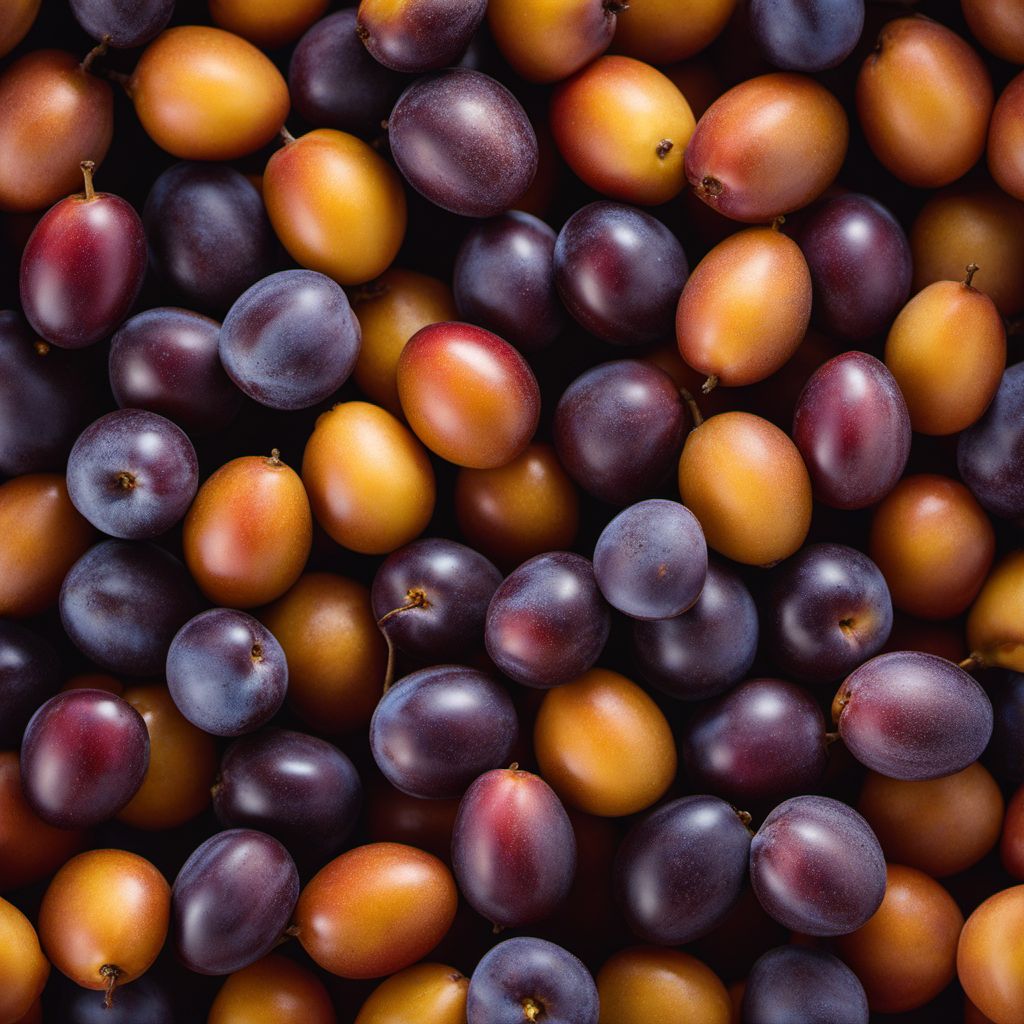
Ingredient
Coco plums
The Tropical Delight
Coco plums are small, round fruits that typically measure around 1 inch in diameter. They have a thin, smooth skin that ranges in color from yellow to purple when ripe. The flesh is juicy and translucent, with a sweet and tangy flavor reminiscent of a mix between a plum and a cherry. The texture is soft and slightly fibrous, with a small pit in the center. Coco plums are often enjoyed fresh or used in jams, jellies, desserts, and beverages.
Origins and history
Coco plums have a long history in tropical regions, particularly in the Caribbean and Central America. They have been used by indigenous communities for centuries, both as a food source and for medicinal purposes. Coco plums are deeply rooted in the cultural traditions of these regions and are often associated with celebrations and festivals. They are also commonly found growing wild in coastal areas and are a popular snack for beachgoers.
Nutritional information
Coco plums are low in calories and fat, making them a healthy choice for snacking. They are a good source of dietary fiber, vitamin C, and antioxidants, which help protect the body against oxidative stress and inflammation. Additionally, they contain small amounts of potassium and vitamin A.
How to select
When selecting coco plums, look for fruits that are firm and free from blemishes or mold. The skin should be smooth and vibrant in color, indicating ripeness. Avoid fruits that are overly soft or have a strong odor, as this may indicate spoilage.
Storage recommendations
To store coco plums, place them in a breathable container or perforated bag and store them in the refrigerator. They can be kept for up to a week. For longer storage, coco plums can be frozen. Simply wash and dry the fruits, remove the pit, and place them in a freezer-safe bag or container. They can be stored in the freezer for up to 6 months.
How to produce
Coco plums can be grown in tropical and subtropical regions. They thrive in warm climates with well-drained soil and plenty of sunlight. They can be propagated from seeds or by grafting onto rootstock. It is important to provide regular watering and fertilization to ensure healthy growth and fruit production.
Preparation tips
Coco plums can be enjoyed fresh as a snack or used in a variety of culinary applications. They can be used to make jams, jellies, and preserves, adding a unique tropical flavor to these spreads. Coco plums can also be used in desserts such as pies, tarts, and cobblers. They pair well with other tropical fruits like mango, pineapple, and coconut. Additionally, coco plums can be blended into smoothies or used to make refreshing beverages like juices and cocktails.
Availability
Caribbean, Central America, tropical regions
More ingredients from this category » Browse all

Water pears
The Refreshing Delight: Exploring the World of Water Pears

Water apples
The Refreshing Delight: Exploring the World of Water Apples

Water berries
"The Refreshing Gems: Exploring the World of Water Berries"

Carandas
The Tangy Jewel of the Tropics

Sea grapes
The Ocean's Delicacy: Sea Grapes

Otaheite gooseberries
The Tropical Delight: Otaheite Gooseberries

Jambuls
The Purple Powerhouse: Unveiling the Secrets of Jambuls

Grumichamas
The Exotic Brazilian Berry

Acerolas
Vibrant Superfood Berries

Hog plums
The Tangy Delight

Camu camus
The Mighty Camu Camu

Surinam cherries
Exotic Tangy Gems